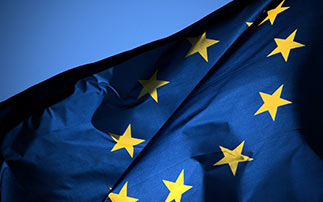This year, the European Commission published two documents in order to state the shape of the EU concerning innovation: an Innovation Union Scoreboard and a State of the Innovation Union report.

25 August 2021
+33(0)1 42 54 60 64 | contact@welcomeurope.com
This year, the European Commission published two documents in order to state the shape of the EU concerning innovation: an Innovation Union Scoreboard and a State of the Innovation Union report.
Fallowing the adoption of the flagship initiative for boosting innovation in 2008 and of the Europe 2020‘s strategy, the EU results in the innovation area seemed to get better.
However, since 2008 and the economic crisis, the business companies developed a tendency to lessen their investments in the research area, a choice that created a negative impact on innovation!
In this context, the challenge for the EU is to foster entrepreneurial spirit and promote performing research systems.
EU programmes more and more focused on innovation
In order to respond to these challenges, the EU established several funding programmes:
– The CIP (Competitiveness and Innovation Framework Programme): this programme gives funds to support innovation in SME. It will be replaced by the COSME programme in 2014.
– The FP7 (7th Framework Programme for Research and Technological): aiming at improving the capacities of R&D in Europe and transforming the results into goods and services. Its sub-programme “cooperation” favors in particular industry and high education’s cooperation. It will be replaced by the Horizon 2020 programme in 2014.
– The EUREKA programme: a network aiming at reinforcing industrial cooperation between SME, research centers and Universities in the industrial innovation area.
The new 2014-2020 programmation will conserve these priorities, in order to carry out a Union for Innovation. The Europe 2020 strategy, to which the new programmation refers, insists on the will to set an intelligent, sustainable and inclusive growth, a choice that will necessarily endure important efforts from the innovation sector.
The state of performances as regards to innovation in the EU: a tendency to divergence between the Member States
In its Innovation Union Scoreboard, The European Commission takes stock of the results of different countries in the field of innovation.
To do so, the Commission relied on 24 indicators, grouped into three main categories:
•Enablers (Human resources, open, excellent and attractive research systems, and finance and support)
•Firm activities (firm investments, linkages & entrepreneurship, and intellectual assets)
•Outputs (innovators and economic effects, including employment)
Therefore, some countries stand out being “Innovation leaders”. This concerns Sweden, Germany, Denmark and Finland. Others are called “Innovation followers”, while performing above the EU average: the Netherlands, Luxembourg, Belgium, the UK, Austria, Ireland, France, Slovenia, Cyprus and Estonia.
And other “Moderate innovators”, while performing below the EU average: Italy, Spain, Portugal, Czech Republic, Greece, Slovakia, Hungary, Malta and Lithuania.
Poland, Latvia, Romania and Bulgaria are them, well below that of the EU average.
Findings of the study show that, for the most innovative countries:
•The business innovation efforts and those of the higher education sector have a key role in research & development (R&D) expenditure and patent applications.
•There is a strong linkage between industry and science
Moreover, it appears that divergences between EU countries are deepening while some countries see their situation worsen. It is the case for the UK, Poland, the Czech Republic, Hungary, Portugal, Romania and Greece. Those two last countries being the ones that are experiencing the worst decline of, in that order, 18.7% and 16%.
Thus, the convergence phenomenon in the field of innovation appears to be held in abeyance; and in the actual crisis context the less innovative countries stopped trying getting closer to the more innovative ones.

25 August 2021

